Flavorful homemade zero-oil kothamalli podi or coriander/cilantro-flavored spice powder mix recipe! It is a versatile spice blend that you can relish as a side or jazz up other dishes! Check out how to make this podi or the spice powder with detailed step-wise pictures.
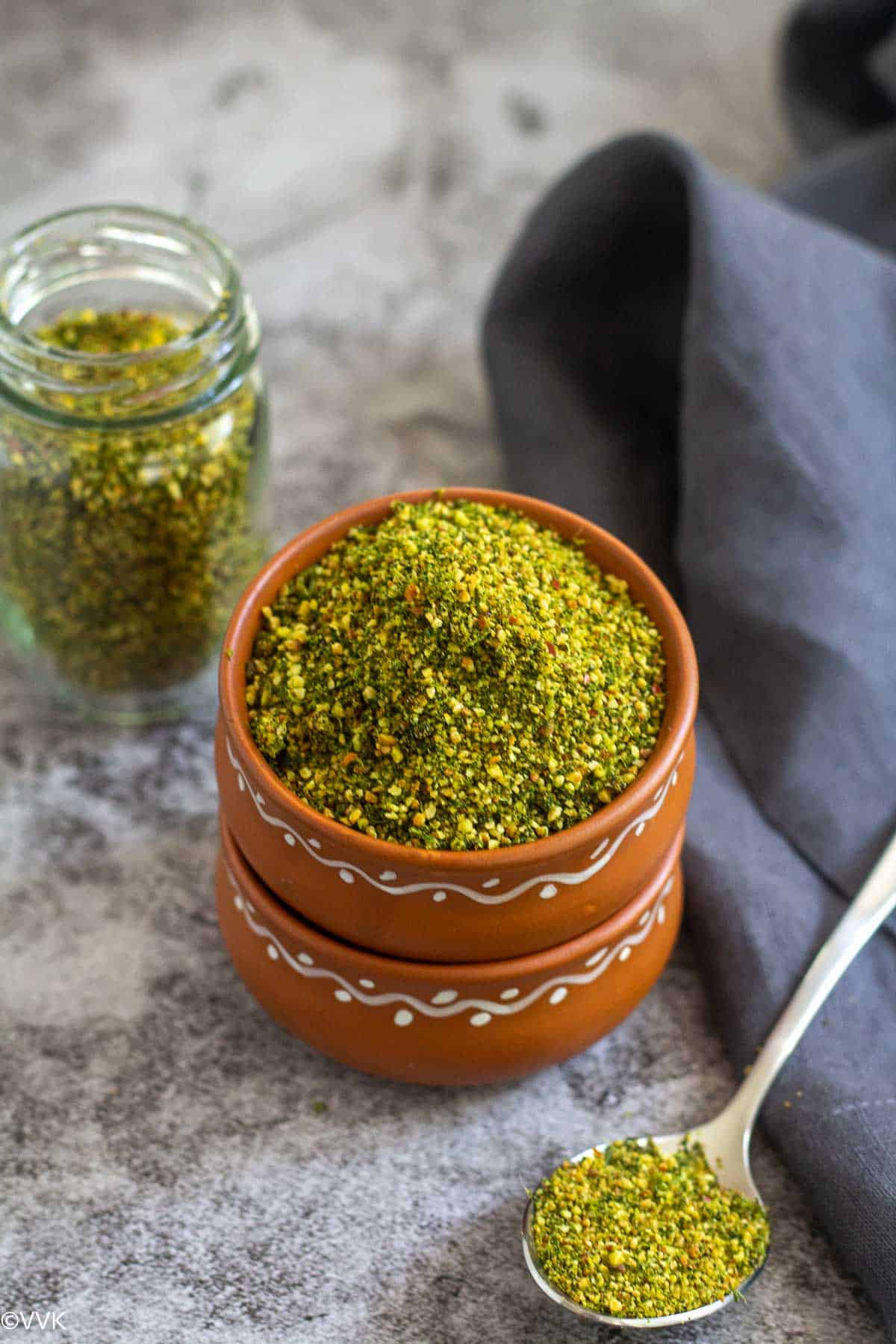
Growing up, thokku (grated pickle varieties) and these kinds of spice-powders or podi were part of my regular meal fare. My dad loves the grated pickle varieties than regular pickles and also these spice blends, especially this cilantro spice powder.
Jump to:
Kothamalli is the Tamil word for cilantro or the coriander leaves, and podi means powder. Even though it is more like podi/powder, I remember calling this dish kothamalli thokku.
Zero oil recipe
We don’t need any oil or water to prepare this spice powder. We dry roast all the ingredients without any oil and pulse it along with dry cilantro. As we don’t use any oil or water, the shelf life of this podi is longer.
Even without refrigeration, it stays suitable for a week. During my undergrad days when I was in the hostel, mom made this in bulk and packed it for me. I have kept it for up to 10 days. Make sure to store in an air-tight container and use a clean spoon during every use.
How to use/serve this kothamalli podi
As I mentioned before, this is a very versatile podi, and you can use it in different ways.
- Instead of pickle, use this podi as a side for your yogurt rice. That’s my favorite combo.
- You can easily make a cilantro rice recipe with this podi. I will share the recipe soon.
- Add it to your savory porridge or gruel for added flavor.
- Instead of rasam podi, you can use this cilantro podi and some pepper powder to taste and make delicious cilantro rasam.
- You can also pair it with idli and dosa.
The sky is the limit. It goes well with all the rice dishes and tiffin items too.
Dietary specifications.
Naturally, this dish is vegan and nut-free. Use gluten-free asafoetida if you are allergic to gluten. I wouldn’t skip asafoetida in this recipe as it adds a nice flavor.
Now without any further ado, let’s see how to make this kothamalli podi with detailed step-wise pictures.
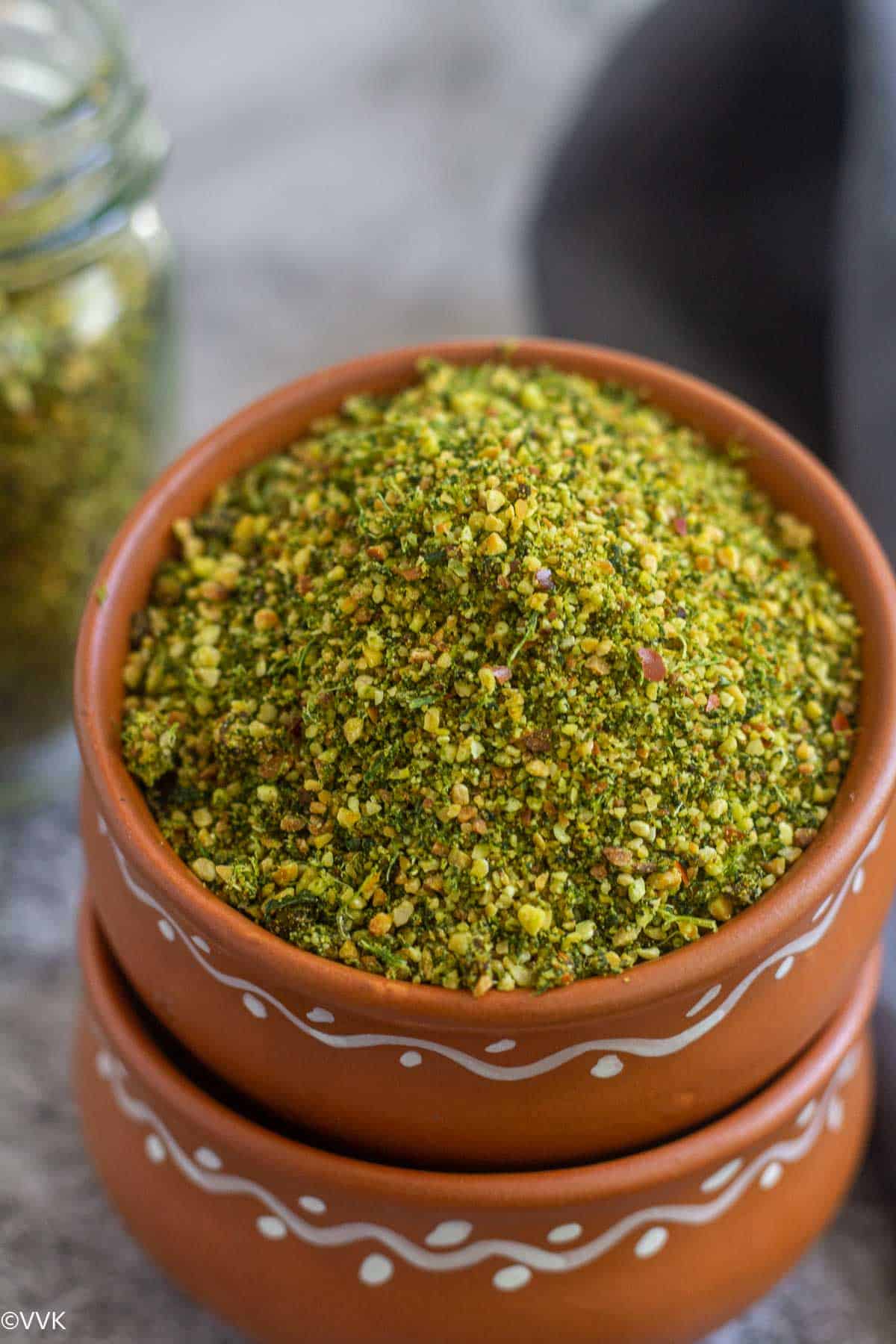
Kothamalli podi recipe with detailed step-wise pictures
- Wash cilantro and pat it dry. Remove the hard and stiff stems.
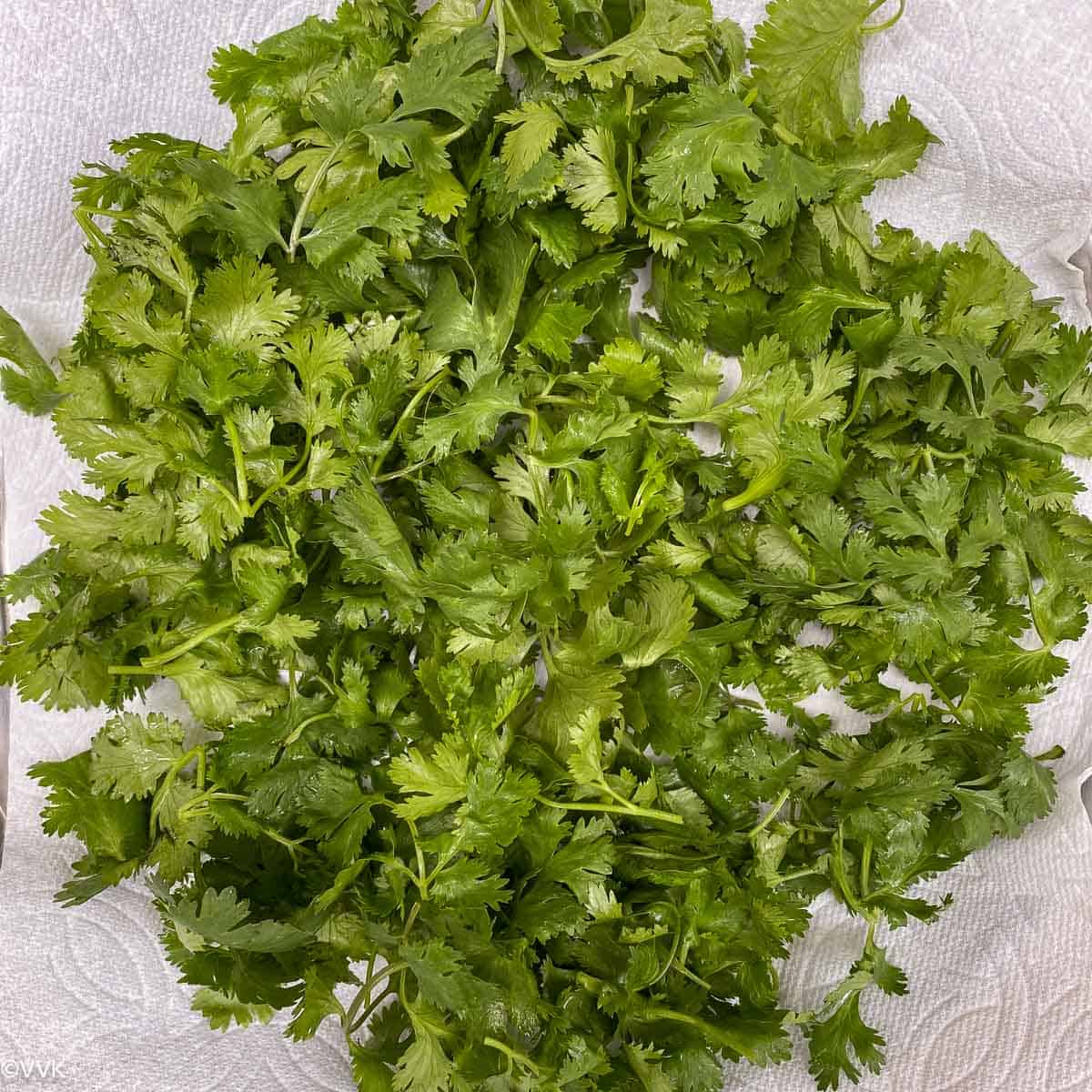
- Place the clean cilantro under the sun and let it dry for one to two hours. You can dry it in the shade too. Just make sure there isn’t any moisture.
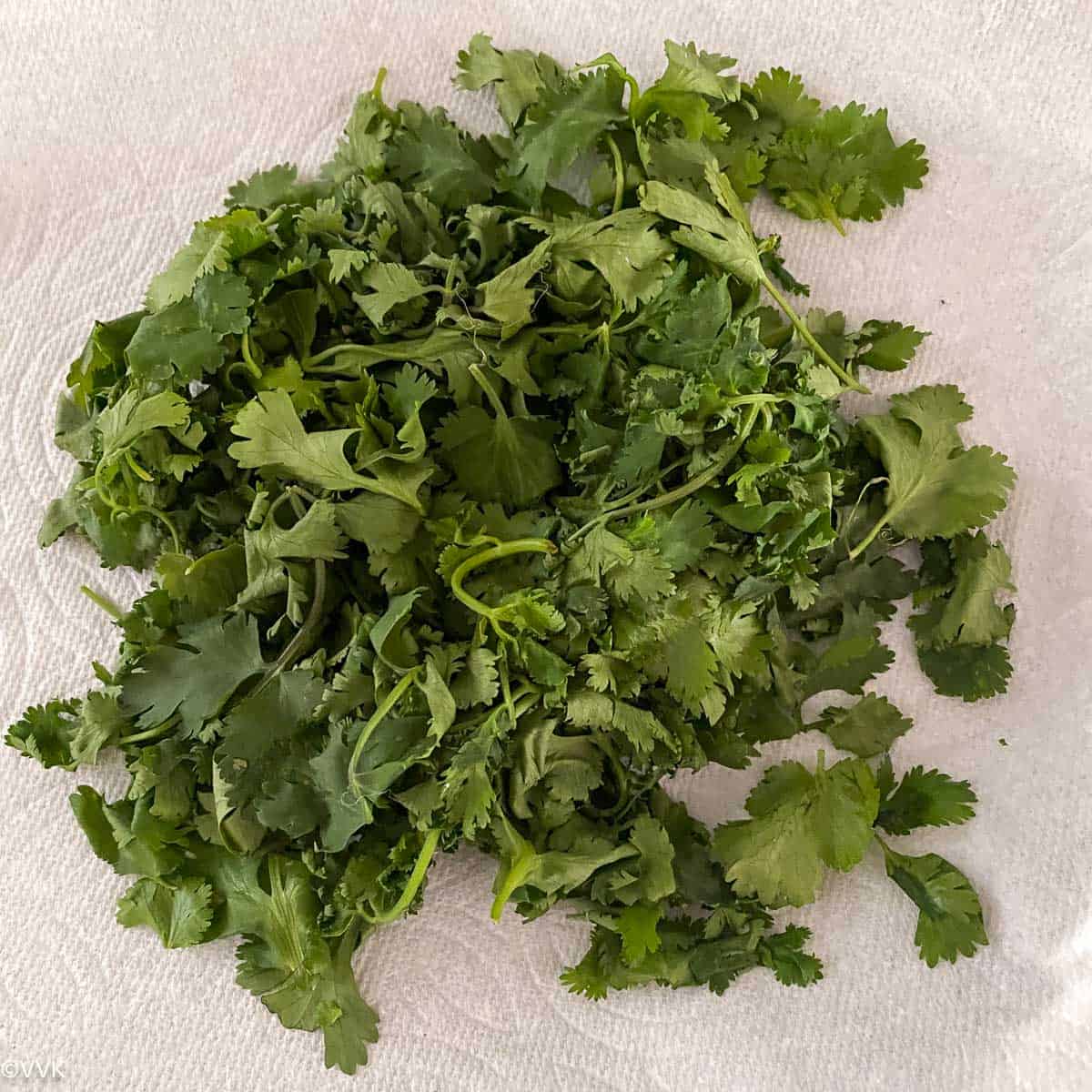
- Heat a pan or kadai and when it is hot, add the chana dal and roast until it turns deep golden brown. Transfer it to a mixer jar.
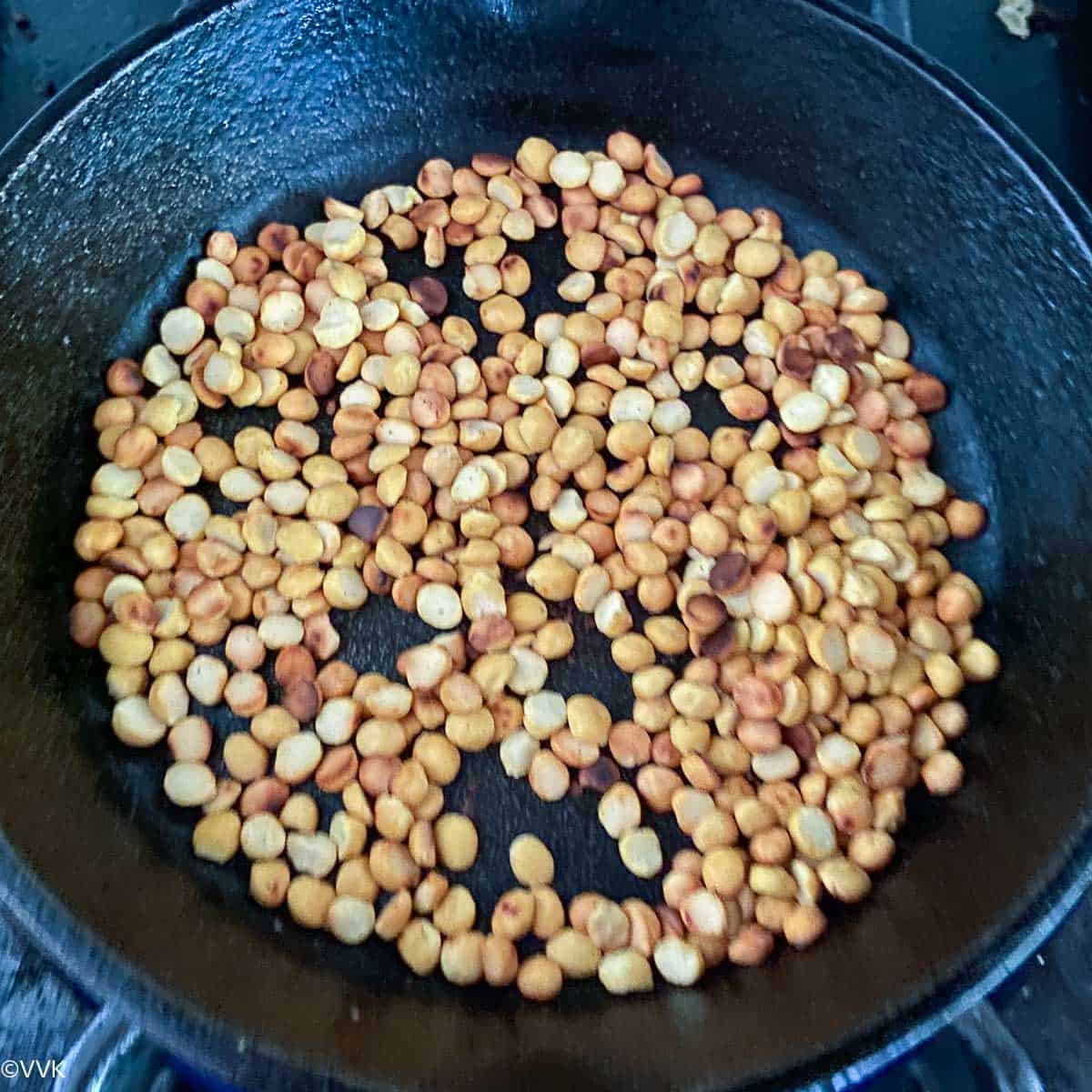
- In the same kadai, add the urad dal and roast until it turns light brown. Then add the asafoetida and dried red chilies and roast until the chilies are crisp and urad is deep golden brown.
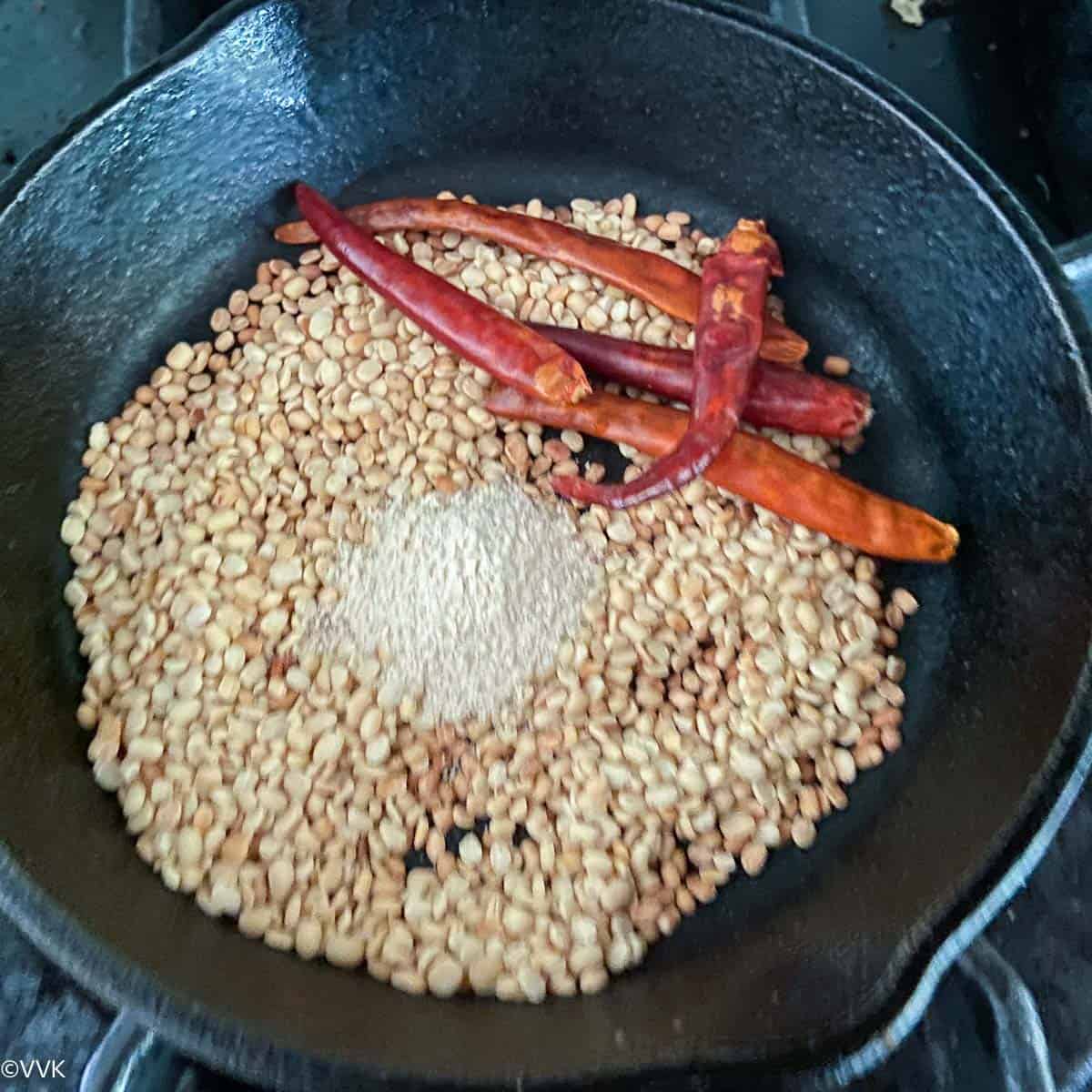
- Transfer the urad to a mixer jar, and in the same pan, add the tamarind piece and roast for 30 seconds and turn off the heat. Let it sit in the residual heat.
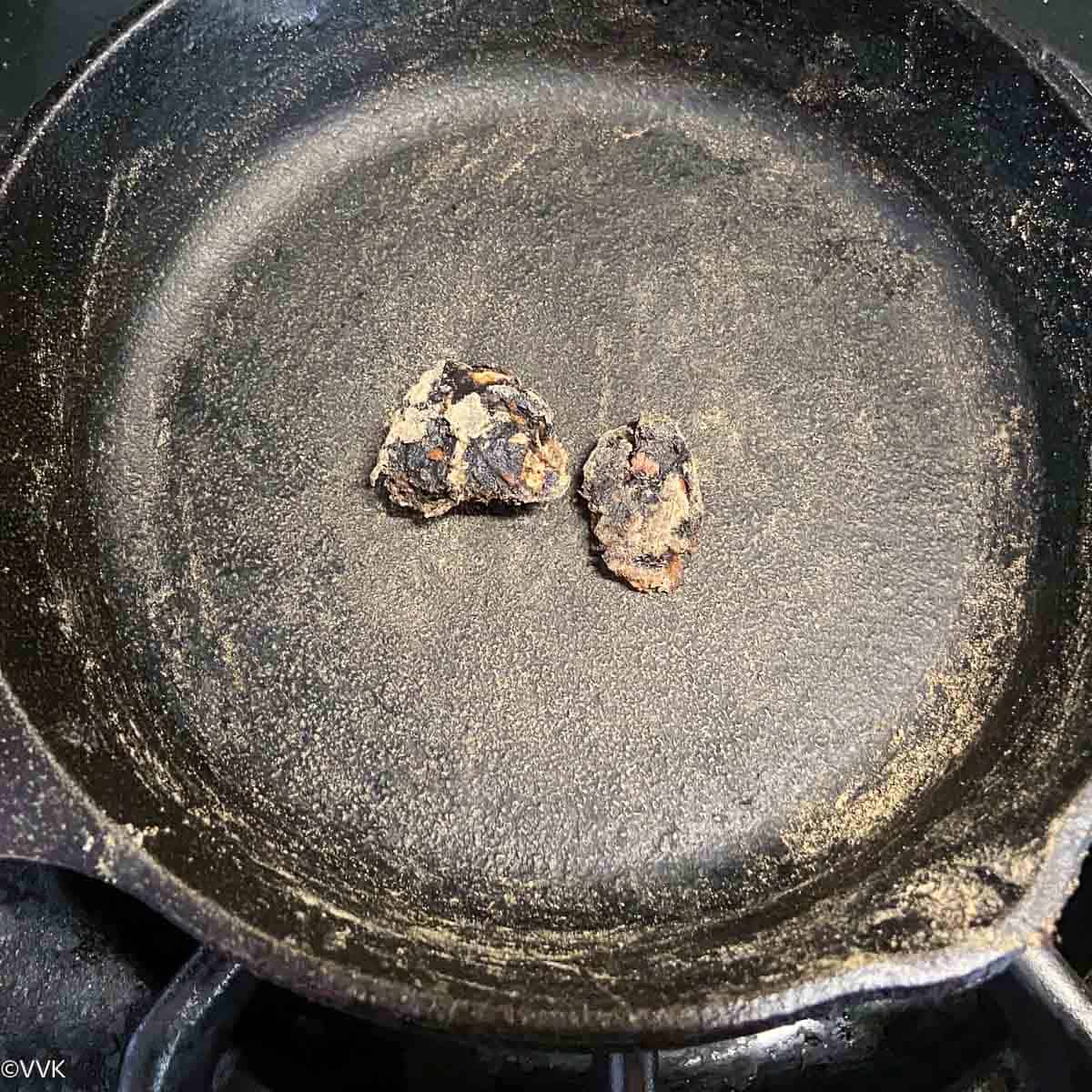
- Let the lentils cool. Add salt and the tamarind to the mixer jar.
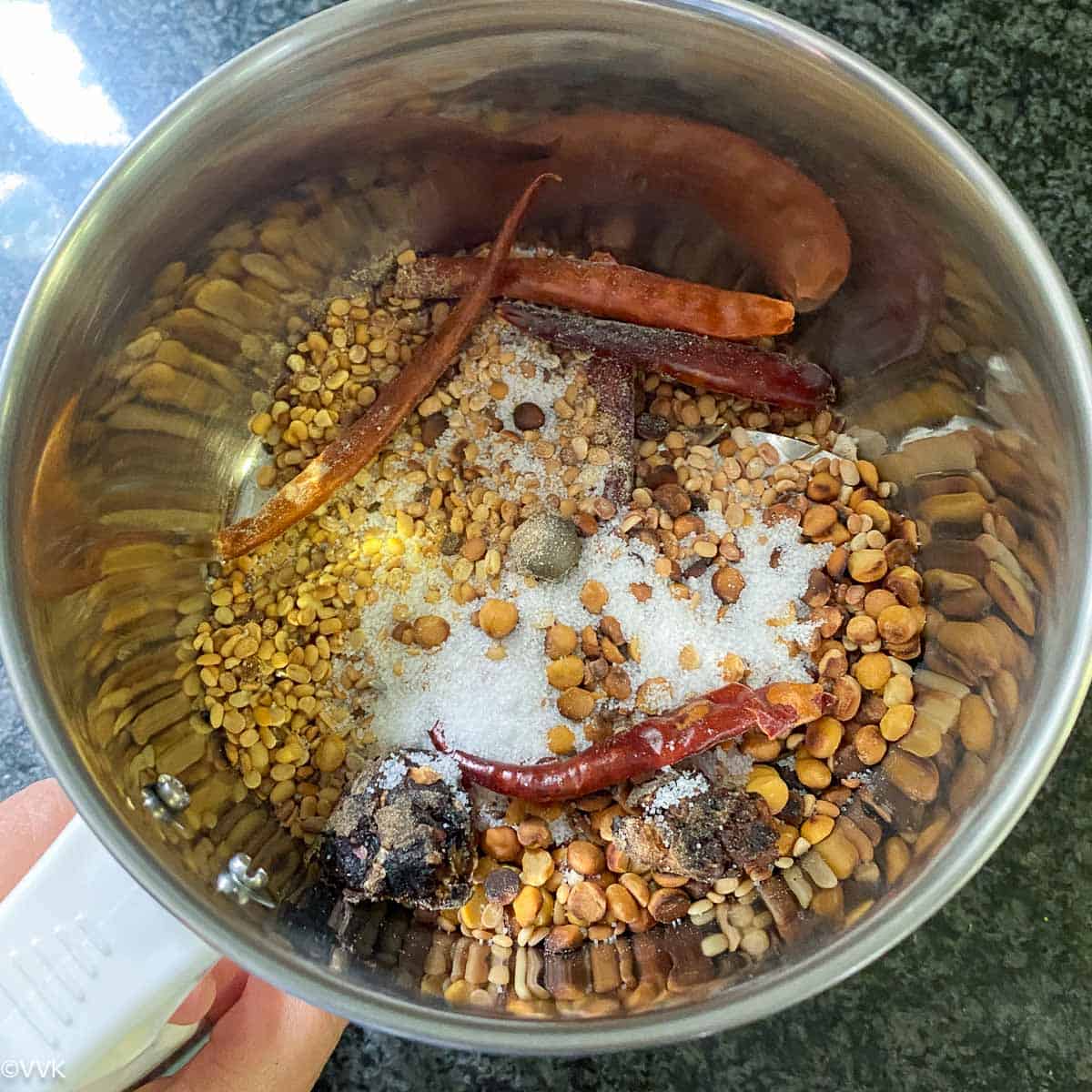
- First grind the lentils and red chilies. Mix coarsely like below.
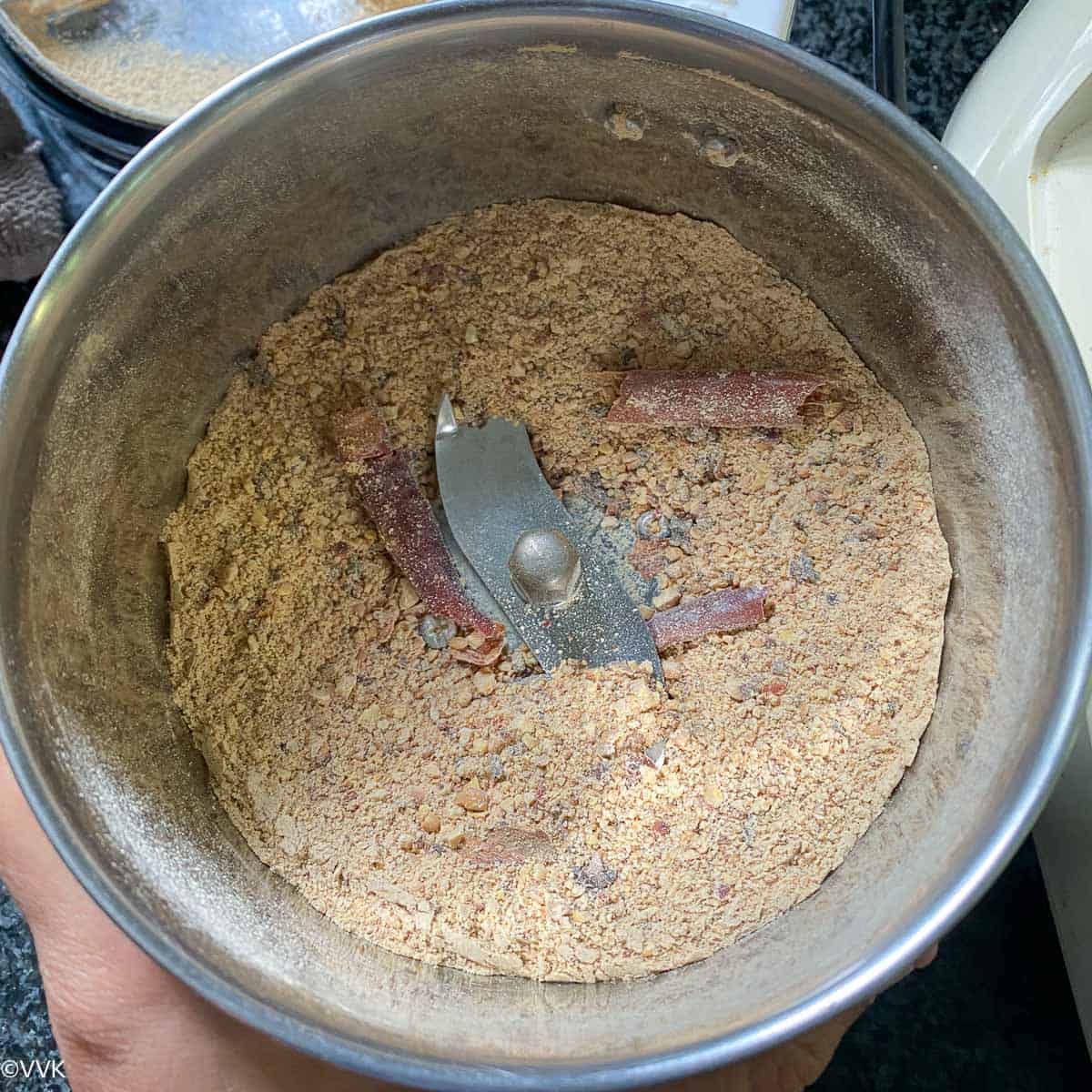
- Now add the dried cilantro.
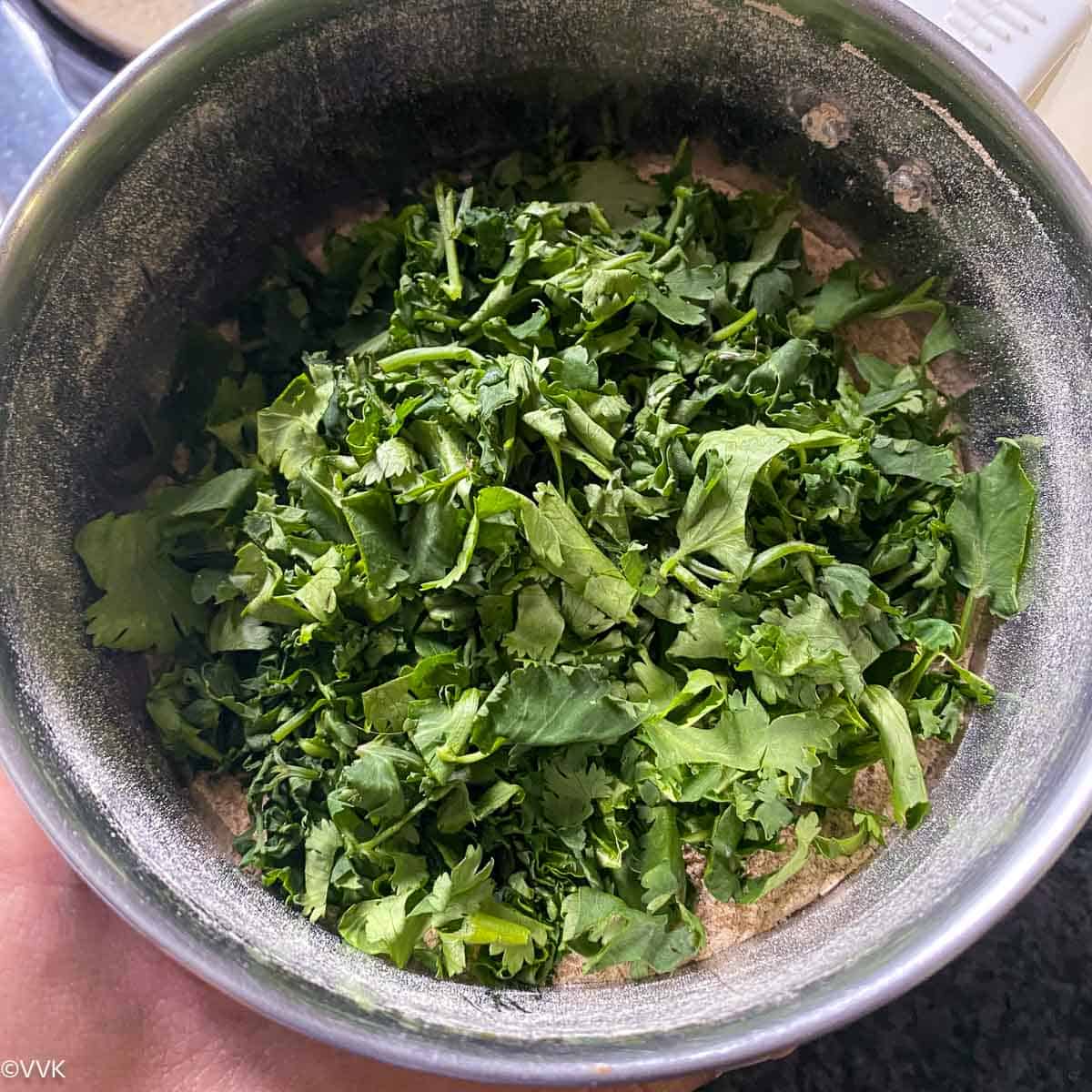
- After adding the cilantro, use the pulse mode and grind them. Do not grind the ingredients continuously, or it will become a thick blob. Use a spatula to mix the ingredients as required.
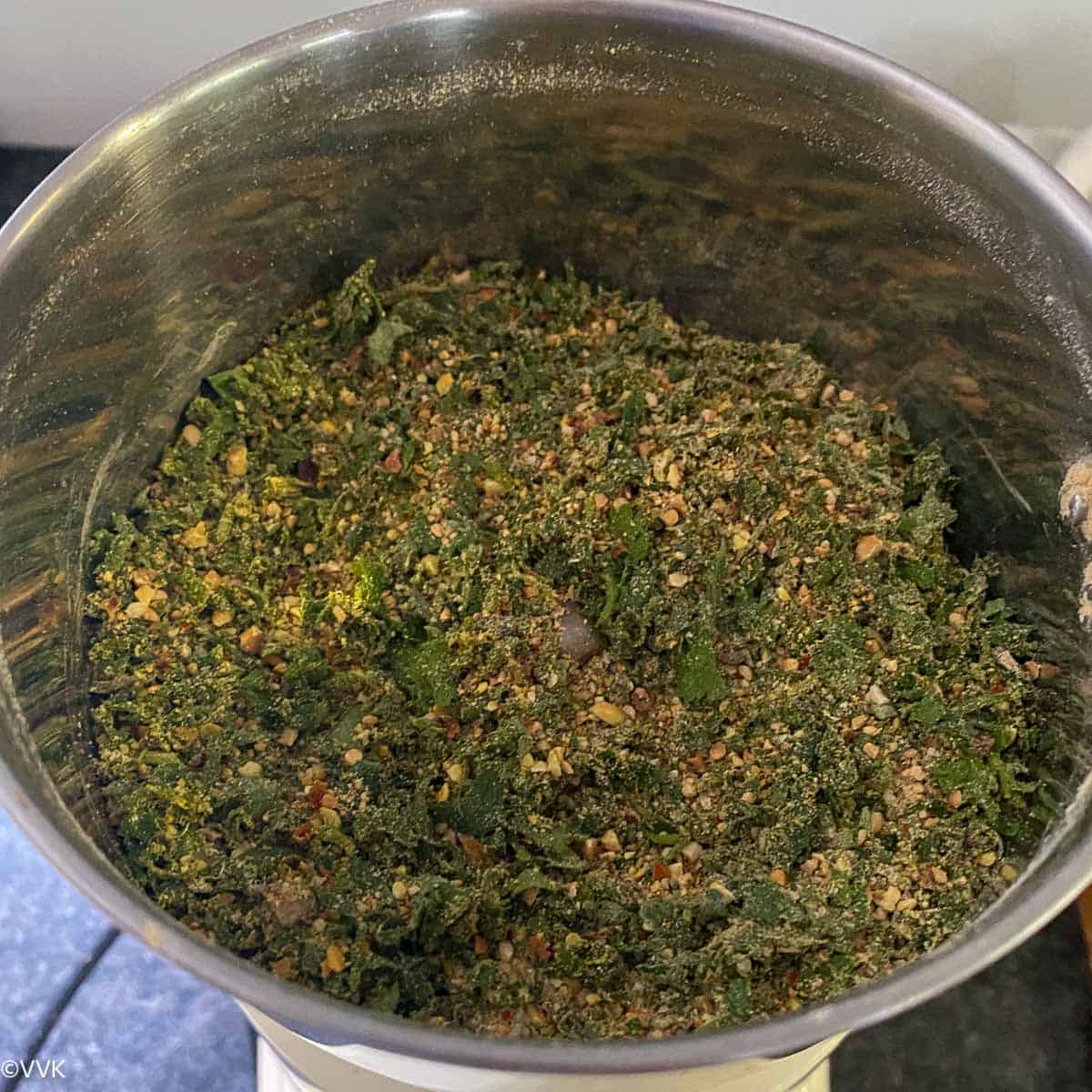
- Pulse at regular intervals until you get a nice coarse and dry powder, as shown below. Let it cool a bit and store it in an air-tight container.
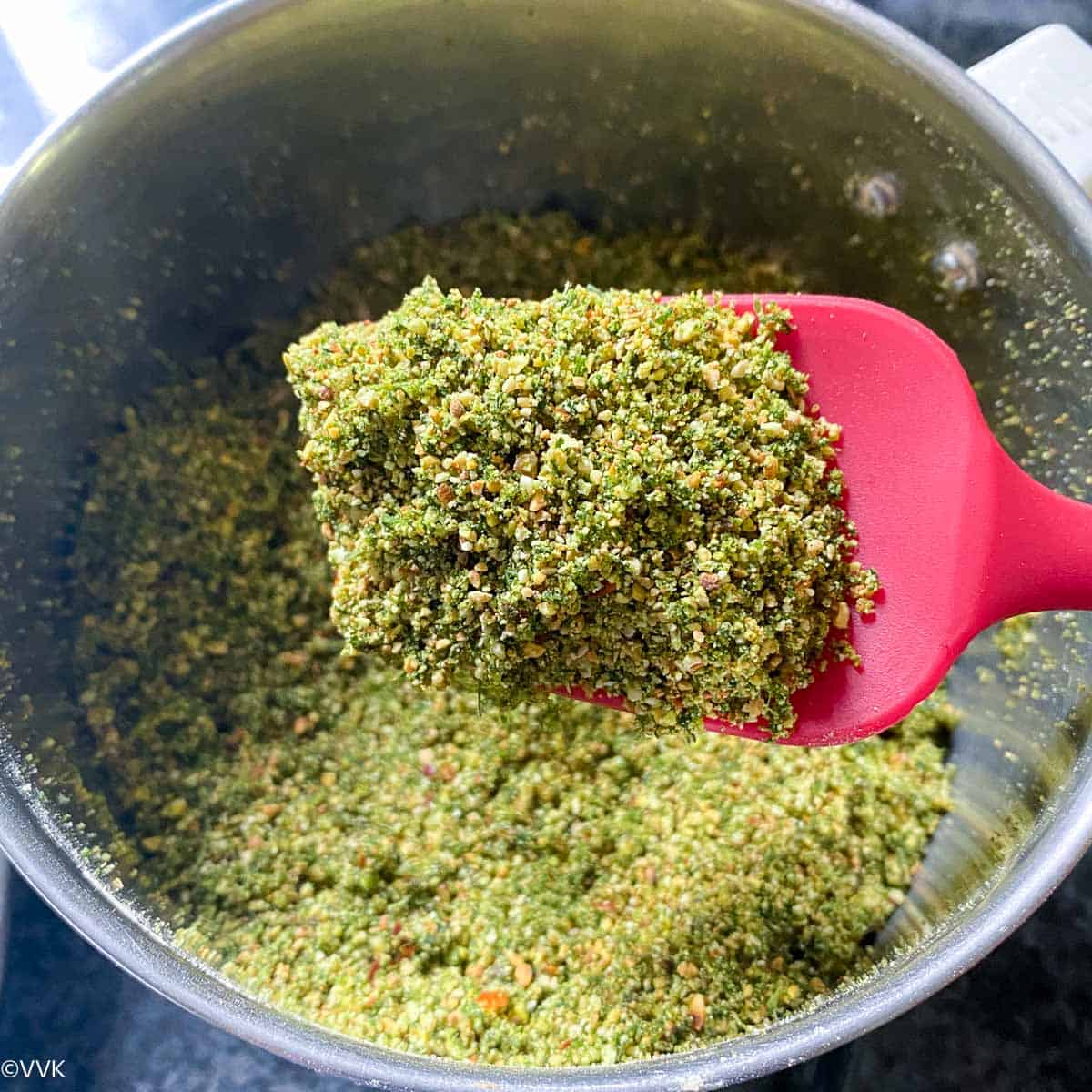
Recipe notes
- Adjust the salt and red chilies as per your preference.
- Make sure there isn’t any moisture in the cilantro. We want it completely dry. Dry cilantro ensures a longer shelf-life.
- Also, for this recipe, I recommend tamarind flesh/pods, not the paste. Tamarind paste will make the chutney wet, and the consistency won’t be like a dry spice powder. It will be slightly wet and more like thokku. You can try that way as well but make sure to refrigerate.
- After adding cilantro, use the pulse mode and blend the spice mix. Do not blend it continuously.
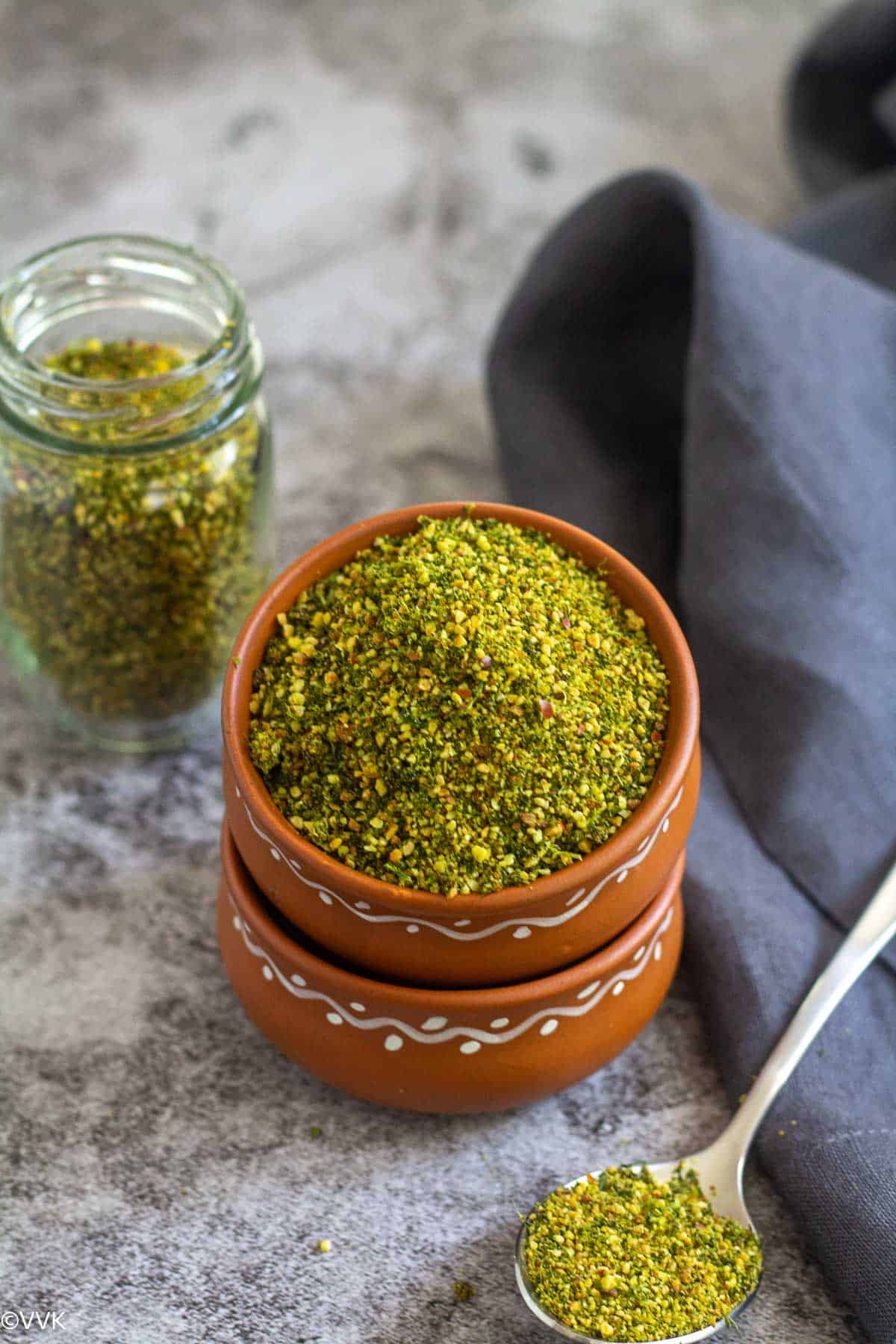
More spice blends from my blog archives
Loved this recipe?
If you try this kothamalli podi, please don’t forget to comment and rate this recipe. If you have any questions, please leave a comment, and I will get to it ASAP. Make sure to follow me on my Pinterest or Instagram or join my Facebook Group for recipe updates and simple Indian meal ideas.
📖 Recipe
Kothamalli Podi | Cilantro-Flavored Spice Powder Mix
Equipment
- mixer jar or blender
Ingredients
Measurement Details: 1 cup = 240ml; 1 tbsp = 15ml; 1 tsp = 5ml;
- 50 grams cilantro 2 cups approx, tightly packed. washed and stiff stems removed. ( 1 big bunch)
- ¼ cup chana dal
- ¼ cup urad dal I used a mix of whole and split urad dal
- 5 dried red chilies or to taste
- 10 grams tamarind small gooseberry sized, approx 10 grams
- 1.5 tsp salt or to taste
- ½ tsp asafoetida heaped
Instructions
- Wash cilantro and pat it dry. Remove the hard and stiff stems.
- Place the clean cilantro under the sun and let it dry for one to two hours. You can dry it in the shade too. Just make sure there isn’t any moisture.
- Heat a pan or kadai and when it is hot, add the chana dal and roast until it turns deep golden brown. Transfer it to a mixer jar.
- In the same kadai, add the urad dal and roast until it turns light brown. Then add the asafoetida and dried red chilies and roast until the chilies are crisp and urad is deep golden brown.
- Transfer the urad to a mixer jar, and in the same pan, add the tamarind piece and roast for 30 seconds and turn off the heat. Let it sit in the residual heat.
- Let the lentils cool. Add salt and the tamarind to the mixer jar.
- First grind the lentils and red chilies. Mix coarsely like below.
- Now add the dried cilantro.
- After adding the cilantro, use the pulse mode and grind them. Do not grind the ingredients continuously, or it will become a thick blob. Use a spatula to mix the ingredients as required.
- Pulse at regular intervals until you get a nice coarse and dry powder, as shown below. Let it cool a bit and store it in an air-tight container.
Notes
- Adjust the salt and red chilies as per your preference.
- Make sure there isn’t any moisture in the cilantro. We want it completely dry. Dry cilantro ensures a longer shelf-life.
- Also, for this recipe, I recommend tamarind flesh/pods, not the paste. Tamarind paste will make the chutney wet, and the consistency won’t be like a dry spice powder. It will be slightly wet and more like thokku. You can try that way as well but make sure to refrigerate.
- After adding cilantro, use the pulse mode and blend the spice mix. Do not blend it continuously.
Nutrition
I am not a nutritionist. The nutritional information is provided as a courtesy and is an estimate only. It varies depending upon the product types or brands.


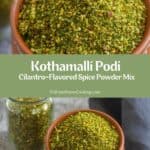
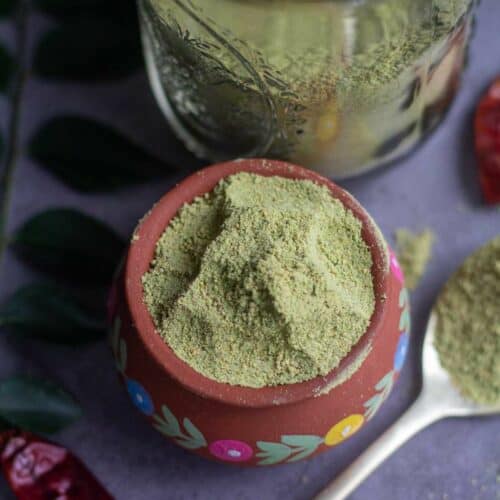
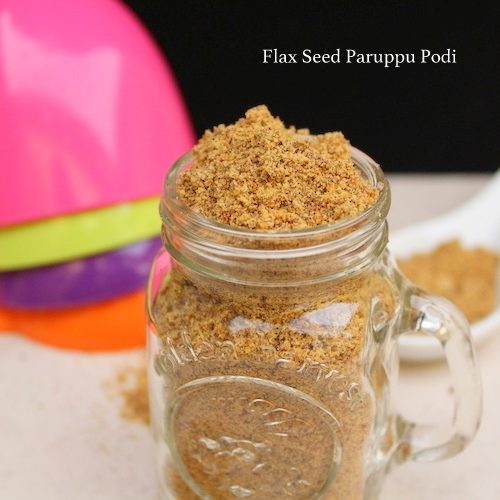
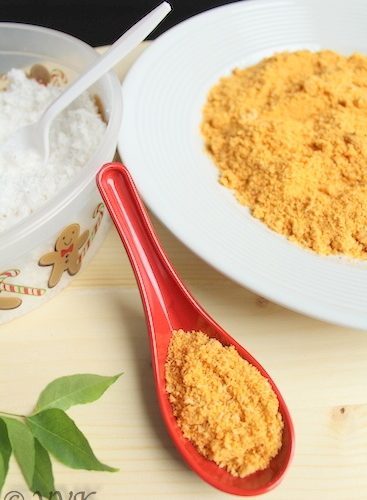
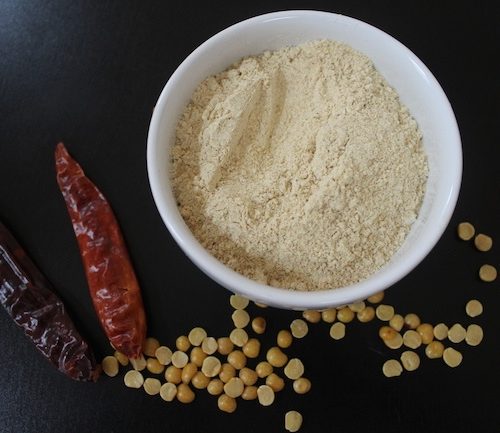
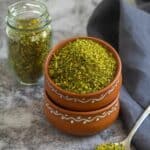
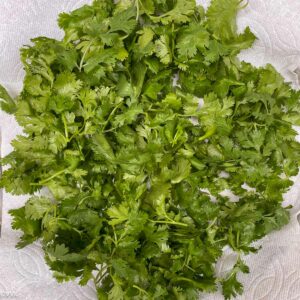
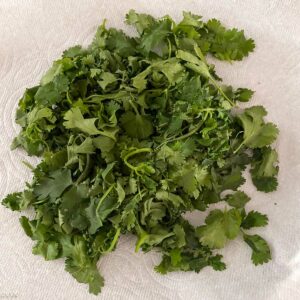
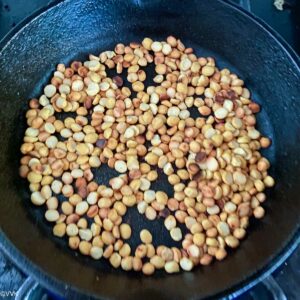
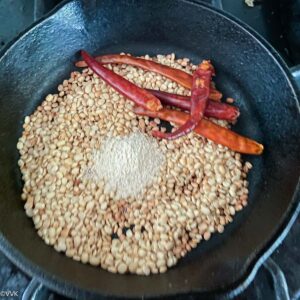

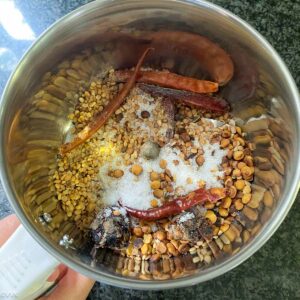
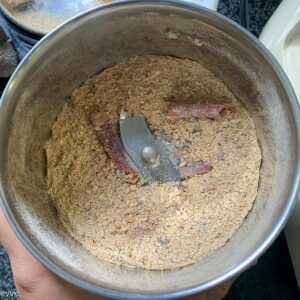
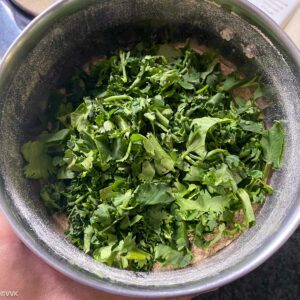
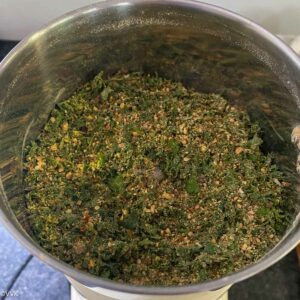
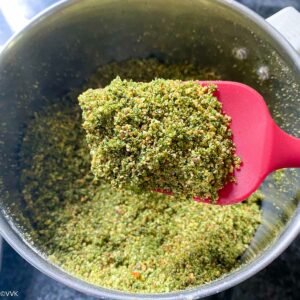

Leave a Reply